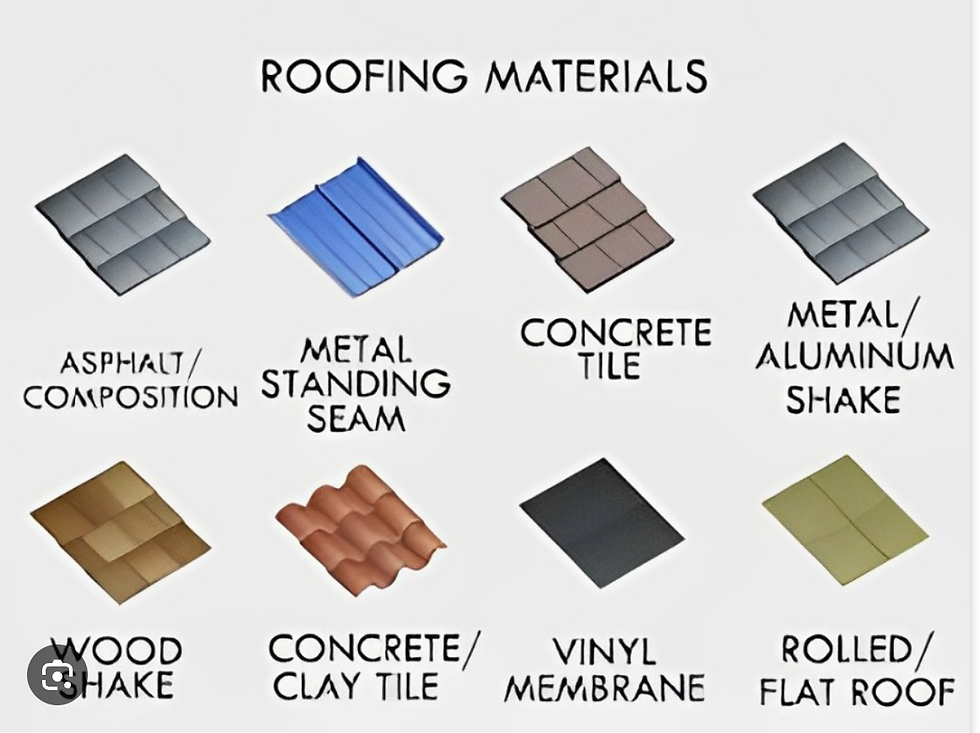Are Your Shingle Granules Telling You Something About Your Roof?
- Roof Repairs Tallahassee

- Jun 29
- 3 min read
When it comes to protecting your home in Florida’s hot, humid climate, every part of your roofing system matters — and that includes something as small as a granule. Homeowners often overlook shingle granules, but these tiny particles play a huge role in keeping your asphalt shingle roof durable, energy-efficient, and protected from the elements.
What Are Shingle Granules?
Shingle granules are the small, coarse particles that coat the surface of asphalt shingles. While they might look like nothing more than sand or gravel, they serve several vital purposes. These granules are made from crushed rock and minerals and are bonded to the shingles during the manufacturing process.
Why Are Granules Important?
In Florida, your roof is constantly exposed to intense sunlight, UV rays, high humidity, wind, and salt-laden air. The granules act as a protective shield for the asphalt layer underneath the shingles. Without them, your shingles would quickly deteriorate under the sun’s harsh UV rays. Here’s what shingle granules do:
UV Protection: They block harmful ultraviolet rays, preventing the asphalt from drying out and becoming brittle.
Fire Resistance: Mineral granules help increase the fire resistance of your roof.
Color & Aesthetic: They provide the color and texture of the shingle, which helps with curb appeal.
Energy Efficiency: In Florida, reflective shingle granules can reduce heat absorption and lower your cooling bills.
Signs Your Shingle Granules May Be Failing
If you're starting to see what looks like sand in your gutters or at the base of your downspouts, that’s a clear sign your shingle granules are shedding. While some granule loss is normal over time, excessive loss could point to a bigger problem.
Here are signs to watch for:
Bald spots or patches on your shingles
Granules piling up in your gutters
Uneven color or texture on your roof
Shingles curling or buckling
In the hot Florida climate, this can be a sign that your roof is no longer protected against UV damage and might be approaching the end of its service life.
What Should You Do If You Suspect Granule Loss?
If you’re seeing signs of granule loss, the best thing you can do is schedule a professional roof inspection. A qualified roofing contractor can determine whether the loss is normal aging or a sign of early roof failure.
Now, choosing the right roofing contractor can be a challenge. The key is to find someone who explains the issue clearly, shows you photos or videos of the shingle granules situation on your roof, and gives you honest options for repair or replacement — not just a sales pitch.
What to Look For in a Roofing Contractor
Whether you're dealing with early granule loss or just want peace of mind, here are tips for finding the right roofer:
Look for local experience with Florida’s heat and humidity
Ask for licensing and insurance
Read online reviews and look for transparent communication
Don’t be afraid to get a second opinion
Ask them to explain the role of shingle granules and what they see on your roof
Not all contractors are the same — and that’s okay. Some good contractors may specialize in repairs, others in full replacements. Some may work with insurance claims; others may not. The key is that you feel informed and confident in their explanation of your roof’s condition.
Conclusion
The shingle granules on your roof might be small, but their job is anything but. In Florida’s punishing heat, granules are the first line of defense that help your shingles last longer, keep your home cooler, and maintain your roof’s integrity.

If you’re concerned about granule loss or have noticed changes in your roof’s appearance, take action early. Getting the right roofing contractor involved can help you avoid bigger issues down the road — and give you the peace of mind you deserve.




Comments